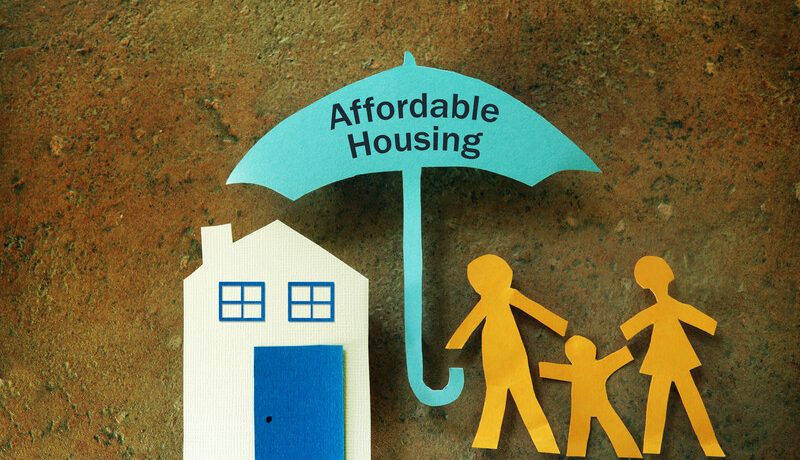Is The Affordability Crisis Someone Else’s Problem?
You’ve no doubt read news stories about renter payment default, or their rent is now up to 60% of their monthly income, or how well-employed workers are living on the streets. The reality might be even harder to comprehend.
We’re not going shy away from tough topics like renter stress, eviction, and affordability here on ManageCasa because they’re key issues to landlord and property management success. And of course, happy tenants are those with a decent life.
Renters Everywhere Are Stressed
Non affordability is a top national issue and it’s a problem for rental property investors too. Affordability of housing is at its lowest level ever. Non-affordable housing reduces the potential market for rental units, reduces potential rental income, and contributes to higher eviction rates.
Non affordability also invites rent controls which make it impossible to earn a profit. Helping the affordability crisis would help us all ensure a positive business outlook.
And then of course, there’s the high cost for home buyers too and how they live house poor perpetually. Will it ever end? Estimates are that the US needs 4.6 new million apartments to keep pace with demand by 2030.
This report on Michigan’s housing situation shows how the current emphasis on high apartment construction is not solving the housing crisis there. They debate whether increased density is a valid affordability solution.

Infographic Courtesy of Statista.com
A Menace with a Cause
This housing crisis is one of unaffordabilty and lack of supply. Whether it’s an IT technician working at Google in the Bay Area living on the street in a camper, or a homeless person on social assistance in New York city, the story is always of pain and desperation.
Why are rents so high and apartments not available? It seems it’s not just a lack of rental units or multifamily investors. There’s a lack of land available for housing as well. In the end, markets and people suffer when land supply is throttled and prices are artificially inflated.
Housing Affordability Chart USA
In this recent chart from Arcgis, the areas in blue, in the Midwest are more affordable, while those in the reddish/brown color are unaffordable. Cities most unaffordable are San Francisco, Seattle, San Jose, Los Angeles, San Diego, Manhattan, Denver, and Miami. Chicago and Dallas also show up as highly unaffordable. More affordable are cities such as Nashville, Charlotte, and Raleigh where many Americans are migrating to.

Unaffordable Cities. Chart courtesy of arcgis.com
What Do Renters Need to Buy a Home?

Chart courtesy of CAR.org
Perhaps if we talk more about the housing affordability crisis and shed light on the matter, we’ll create a push for better solutions. And these might be affordability solutions that help everyone from investors to apartment renters.
Seniors, Students and Low Income Renters are People Too
It’s not just an issue of poverty ridden people, or children. The LA Times reports how seniors too are losing their homes or current residences for homelessness. And for the very poorest, the problem is life threatening.

Infographic courtesy of cohhio.org/report-shows-gap-in-affordable-housing-in-ohio/
Landlords Aren’t to Blame
There are those who blame investors and landlords for too high rents and profiteering. Yet if the property rental investment sector was that lucrative and risk-free, more investment would be pouring in to capitalize on the opportunity. It’s more likely that investors and property management companies are helping to resolve the affordability issue.
Still, the private sector is not really invited to the solution party. Government regulations seem to be the culprit, so the housing crisis will be solved by their removal.
Affordability in California
California’s persistent economic success continues to draw people into the Golden State, just as some leave. Although buoyed by the talk of great career opportunities in tech companies, no affordable housing means workers can’t take those better jobs. Unaffordable accommodations is damaging California’s potential and crushing its small business sector. Startups are leaving for Texas or other locales in the south.
In every state of the Union, the affordability crisis is translating to economic losses. Should a recession occur with higher unemployment and higher interest rates, it’s easy to foresee tragic consequences.

Graphic courtesy of the California Association of Realtors
In 2014, more than 5 years ago, a story in the Washington Post focused on the US national housing crisis. The post talks about the intractable problem of a lack of housing in America. They came up with 6 viable solutions for this persistent issue which are listed down below.
A Canadian poll conducted discovered only 21% of Canadians feel confident their governments can improve affordability over the next five years. Anti-home buying regulations in Canada make it even less likely buyers can purchase a home or condo, and instead must continue renting.
Unaffordable in Canada Too
Home prices and rental prices in Toronto and Vancouver have skyrocketed and well out of line with renters capability with lower wages and who pay in «loonies» which are the equivalent of 75 cents $US. Add in young people with high student loan debt, or students currently in post secondary schools who can’t find accommodation.

Graphic Chart courtesy of toronto.ca/community-people/community-partners/social-housing-providers/

Graphic Chart courtesy of toronto.ca/community-people/community-partners/social-housing-providers/
Non-affordability isn’t Just a US Problem
The real takeaway we get from reading crisis news is that little has changed in the UK, USA, and Canada.
And real estate is so overly restricted and regulated, that new housing can’t be built even if investors are ready to go.
What’s causing the affordable housing crisis in the US? You’ll get many different answers and excuses depending on who you ask, from Airbnb to low wages to lack of builder incentives. The likely culprit is Federal, State and local governments. What do you believe is behind this persistent problem and might solve it?
What Causes the Housing Affordability Crisis?
⦁ high immigration levels
⦁ wages haven’t kept up with property and rent increases
⦁ restrictions on land usage (NIMBYs)
⦁ rent controls
⦁ lack of profitability in multifamily and rental property sectors (costs up, revenue flat)
⦁ lack of tax incentives for investment and development
⦁ unusually strong economy pushes real estate prices up
⦁ strong influx of foreign investment creating high US dollar
⦁ jobs created in urban areas of big cities
⦁ insufficient land and strategies for urban intensification
⦁ demographic changes (millennials and babyboomers)
⦁ regulations on multifamily construction
⦁ property owner greed
⦁ real estate is a hot commodity
What are Some Viable Affordable Housing Solutions?
The Washington Post article offered these 6 solutions:
1. Invest more housing production trust funds
2. survey and find public land for building opportunities
3. reduce municipalities ability to stop development
4. force employers to do more to create housing
5. allow «granny flats» on properties
6. give up on rapid rehousing projects
Urban Intensification and Opportunity Zones
That’s an interesting angle on the US housing affordability crisis. If the issue is that housing is needed mostly near where jobs are, then urban intensification must solve it. Development restrictions are most intense in these areas, making it a tough place to build new multifamily developments, and costs are higher.

But business owners would need big tax incentives to relocate across America and to enjoy freedom from regulations.
If rent controls and taxes are holding new construction back, governments eliminate them after giving builders huge tax incentives to get the multifamily construction boom underway.
Build, Build, Build
The solution to the affordability and homelessness crisis in America is to build new residential units.
If people can’t afford to buy, then government must encourage investors to build developments to at least give Millennials and others a place to rent.
Pushing companies, jobs and people to less populated opportunity zones is a bright solution. In California for instance, people are leaving, some inland to more affordable towns. Some are headed to Texas and Arizona. The process is healthy but takes a long time. And time is running out for tired stressed workers in overcrowded cities with over stressed infrastructure.
Other pundits believe national and state renter assistance programs are the way to go.
Is there anywhere to run to in America to avoid the housing crisis? How would you solve it? Let us know your thoughts below.
See also: Rental Management Software | Software Reviews | Real Estate Market | Property Management Growth Hacks | Property Management Software Comparison| Toronto Housing Market | Canada Housing Market | Toronto Property Management Companies





